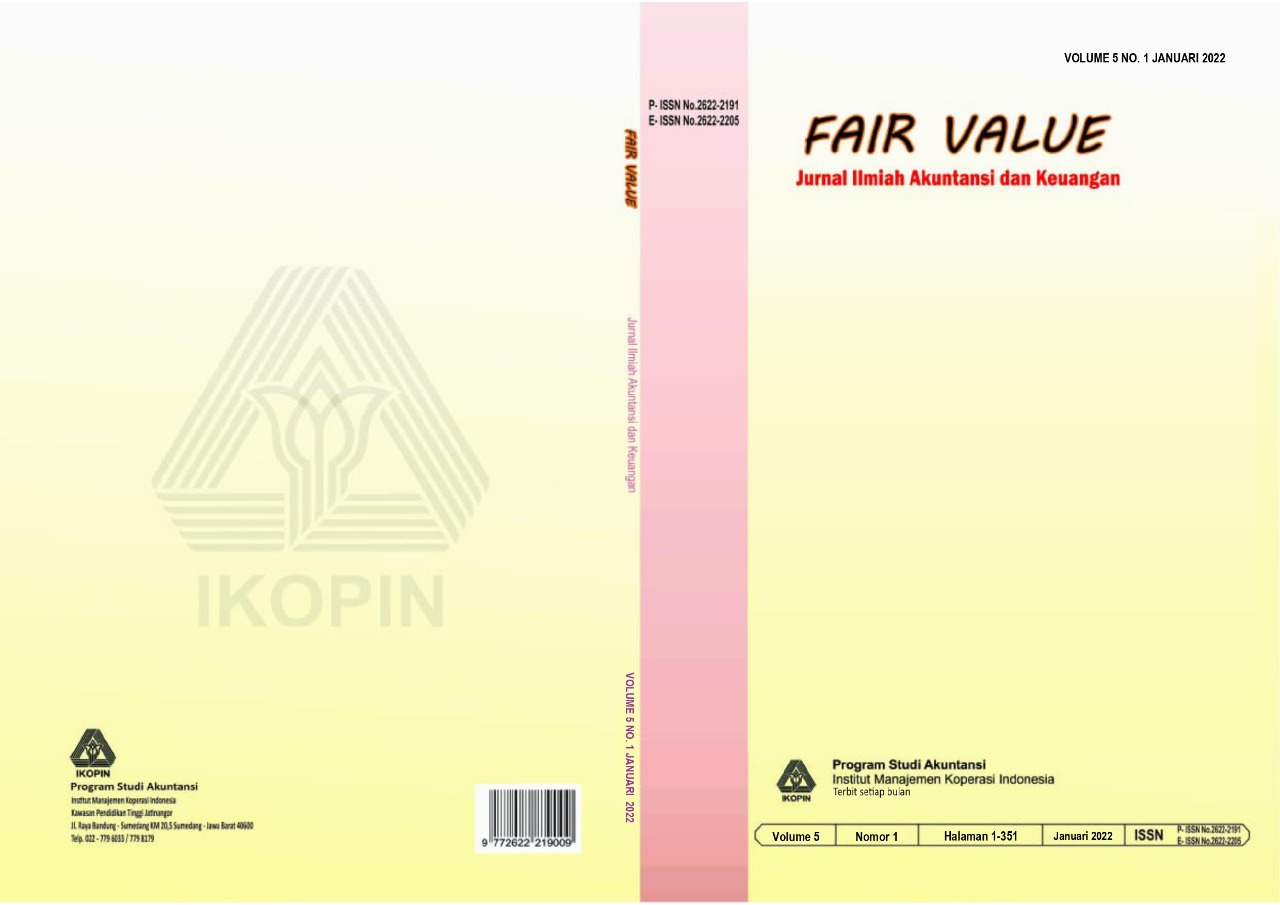Effectiveness of self-control and cyberloafing on employee performance
Main Article Content
Abstract
The purpose of this study was to examine and analyze the effect of self-control and cyberloafing on employee performance. This study uses primary data by taking the population used in the study to select CV companies. Galiya Corp. which is located in Bekasi City uses 40 respondents who work in the company. The method used is a type of quantitative research with survey methods. Data collection techniques by using questionnaires to respondents' employees' CV. Galiya Corp lives or offline. The data processing method in this study uses SPSS 25 software which is used in testing the validity test, reliability test, normality test, multicollinearity test, heteroscedasticity test, multiple regression analysis, t-test, and f test. The results obtained from this study are that H1 is accepted that the self-control and cyberloafing variables simultaneously affect the employee performance variable as seen from the f test, the Sig value is 0.000 <0.05. The self-control variable is the most dominant in influencing employee performance in CV. Galiya Corp can be seen in the results of multiple regression analysis with a coefficient of 0.721.
Article Details
References
Aghaz, A., & Sheikh, A. (2016). Cyberloafing and job burnout: An investigation in the knowledge-intensive sector. Computers in Human Behavior, 62, 51–60.
Apuke, O. D. (2017). Quantitative research methods: A synopsis approach. Kuwait Chapter of Arabian Journal of Business and Management Review, 33(5471), 1–8.
Bilan, Y., Mishchuk, H., Roshchyk, I., & Joshi, O. (2020). Hiring and retaining skilled employees in SMEs: problems in human resource practices and links with organizational success. Business: Theory and Practice, 21(2), 780–791.
Ernawati, R. D., & Muryanto, S. (2021). Pengembangan UMKM dengan transformasi digital dalam rangka pertahanan ekonomi di tengah pandemi covid-19 di Dusun Bendo, Desa Seboto, Kecamatan Gladagsari, Kabupaten Boyolali. Senyum Boyolali, 2(1), 11–16.
Ernawati, R. D., Rahayu, L. P., & Lisdiana, N. (2021). Pengaruh kontrol diri dan perilaku cyberloafing terhadap kinerja pegawai sdn di Kelurahan Kembangkuning, Cepogo, Boyolali pada masa pandemi covid-19. EKOBIS: Jurnal Ilmu Manajemen Dan Akuntansi, 9(2), 194–203.
Farooqui, M. S., & Nagendra, A. (2014). The impact of person organization fit on job satisfaction and performance of the employees. Procedia Economics and Finance, 11, 122–129.
Gupta, P. D., Guha, S., & Krishnaswami, S. S. (2013). Firm growth and its determinants. Journal of Innovation and Entrepreneurship, 2(1), 1–14.
Infante, A., & Mardikaningsih, R. (2022). The potential of social media as a means of online business promotion. Journal of Social Science Studies (JOS3), 2(2), 45–49.
Karin, A. F., Laxamanahady, M. S. D. S., & Hidayat, M. A. (2022). The right to freedom of expression in the digital age. International Conference for Democracy and National Resilience 2022 (ICDNR 2022), 47–54.
Kehoe, R. R., & Wright, P. M. (2013). The impact of high-performance human resource practices on employees’ attitudes and behaviors. Journal of Management, 39(2), 366–391.
Kwilinski, A., Volynets, R., Berdnik, I., Holovko, M., & Berzin, P. (2019). E-Commerce: Concept and legal regulation in modern economic conditions. Journal of Legal, Ethical and Regulatory Issues, 22, 1–6.
Le, H. T. K., Carrel, A. L., & Shah, H. (2022). Impacts of online shopping on travel demand: A systematic review. Transport Reviews, 42(3), 273–295.
Nurbayzura, W., Ahbab, T., Aqila, N. D. P., Sulistyowati, I., Khrisna, G. P., Dewanti, M. C., Wikartika, I., & Aminah, S. (2022). Pengenalan dan pemanfaatan marketplace shopee untuk meningkatkan penjualan UMKM Kelurahan Sananwetan Kota Blitar. Literasi: Jurnal Pengabdian Masyarakat Dan Inovasi, 2(2), 1347–1352.
Ozler, D. E., & Polat, G. (2012). Cyberloafing phenomenon in organizations: Determinants and impacts. International Journal of EBusiness and EGovernment Studies, 4(2), 1–15.
Ross, J. (2018). ‘Cyberloafing’in health care: A real risk to patient safety. Journal of PeriAnesthesia Nursing, 33(4), 560–562.
Sridhar, S. (2017). E-commerce technology made easy. International Journal of Innovative Technology and Research, 5(3), 6183–6198.
Stokel-Walker, C. (2020). Cyberloafing: The line between rejuvenating and wasting time. BBC. https://www.bbc.com/worklife/article/20200206-cyberloafing-the-line-between-rejuvenating-and-wasting-time
Sudarso, A., Purba, B., Ardiana, D. P. Y., Manullang, S. O., Karim, A., Purba, P. B., Muliana, M., Siagian, V., Siregar, M. N. H., & Jamaludin, J. (2020). Konsep e-bisnis. Yayasan Kita Menulis.
Werdhiastutie, A., Suhariadi, F., & Partiwi, S. G. (2020). Achievement motivation as antecedents of quality improvement of organizational human resources. Budapest International Research and Critics Institute-Journal (BIRCI-Journal) Volume, 3, 747–752.

